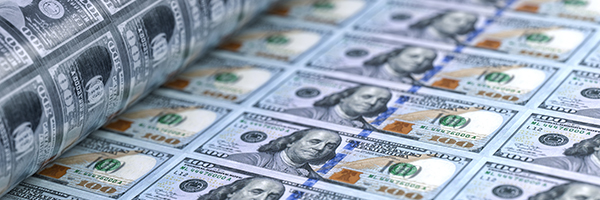
Saturday Night Quarterback says, For the week ahead expect…
Maybe. Must maybe. All eyes will be on the Federal Reserve meeting on December 13.

Maybe. Must maybe. All eyes will be on the Federal Reserve meeting on December 13.

The U.S. economy added 199,000 jobs in November, the Labor Department reported today, Friday, November 8. The unemployment rate dropped to 3.7% from 3.9% in October That surprised economists who had expected the unemployment rate to hold steady. The bond market reacted in the morning hours after the report was released at 8:30 a.m. New York time by selling Treasuries. The yield on the 10-year Treasury gained 8 basis points to 4.233% as of 10 a.m. in New York as bond prices fell. The yield on the two-year Treasury jumped 78 basis points to 4.669%.

Ever since reports showed the U.S. economy grew at a 5.2% annualized rate in the third quarter, economists have been telling investors to expect lower growth in the fourth quarter. Some of that higher growth in the third quarter, they argued, was pulled from the fourth quarter.
Today’s report from the Commerce Department showing a 0.4% drop in wholesale inventories in October supports the economists’ argument.

It’s probably not enough to push the Federal Reserve to cut rates on the schedule that Wall Street is hoping for –with the first cut in March 2024–but it does make a “no increase in interest rates” result from the December 13 Fed meeting even more likely.

Here are the first 8 picks for my GREATER Growth Stocks Special Report. More on the way.

Moody’s Investors Service cut its outlook for Chinese sovereign bonds to negative from stable today, December 5. The rating company kept tws long-term rating on China’s government bonds at A1. You don’t have to be a forensic accountant to see what worries Moody’s.

In October job openings in the U.S. economy fell to the lowest level since early 2021. I’m sure that make the Federal Reserve happy ahead of its December 13 meeting on interest rates. The Fed has been looking for sign that the labor market is cooling off. And it’s getting plenty of them recently. (And will probably get more on Thursday and Friday when the government reports new claims for unemployment and the jobs situation for November.) The question, for those few of us who still see a recession in 2024 as a danger, is When is slower too slow? A slowing labor market means fewer gains to average weekly earnings. Which translates into either less consumer spending, or consumer spending fueled by more debt.

I’m hearing some chatter that says bond traders and analysts are stepping aside from the bond rally. Or are planning to do so. Their argument is that the move has been too far, too fast. Specifically, I’ve heard talk of selling if the yield on the 10-year Treasury hits 4.00%. On Friday, the yield was 4.20%. So I’d be watching to see if anything like a bond rally pause or reversal materializes during the days ahead of the Federal Reserve meeting on December 13

I expect a nervous market this week as investors and traders look ahead to Thursday’s weekly report on initial claims for unemployment and Friday’s report on the jobs numbers for November.

Gold (for February 2024 delivery) was trading at $2087 an ounce on New York Comex today, December 1. That easily beats the old record high of $2051.50 an ounce back in August 2020. The shiny metal is up 12% from $1830 an ounce in early October. The SPDR Gold Shares ETF (GLD), which holds gold, is up 2.53% in the last month as of November 30. History, and the price action on the Gold Shares ETF, tells us that at this point in a strong gold rally, it doesn’t pay to chase gold itself, but it does pay to buy shares of gold miners.

It wasn’t the most forceful pushback it’s true, but the financial markets paid attention to Federal Reserve Chair Jerome Powell’s attempt to say interest rate cuts aren’t just around the corner for about two minutes. And then the rally based on a belief in 4 or 5 cuts in 2024, and as early as March (and certainly by May), was off and running again.

OPEC+ agreed to a surprise new oil supply cut of about 900,000 barrels a day at today’s meeting. But oil prices fell anyway. Turns out that nobody believes that the organization will deliver on its promises. Members including Russia, the United Arab Emirates, Kuwait and Iraq pledged the extra reductions after an online meeting, OPEC said. And Saudi Arabia promised to continue its unilateral 1 million barrel-a-day cut through the first quarter. But, critically, the cuts are voluntary.